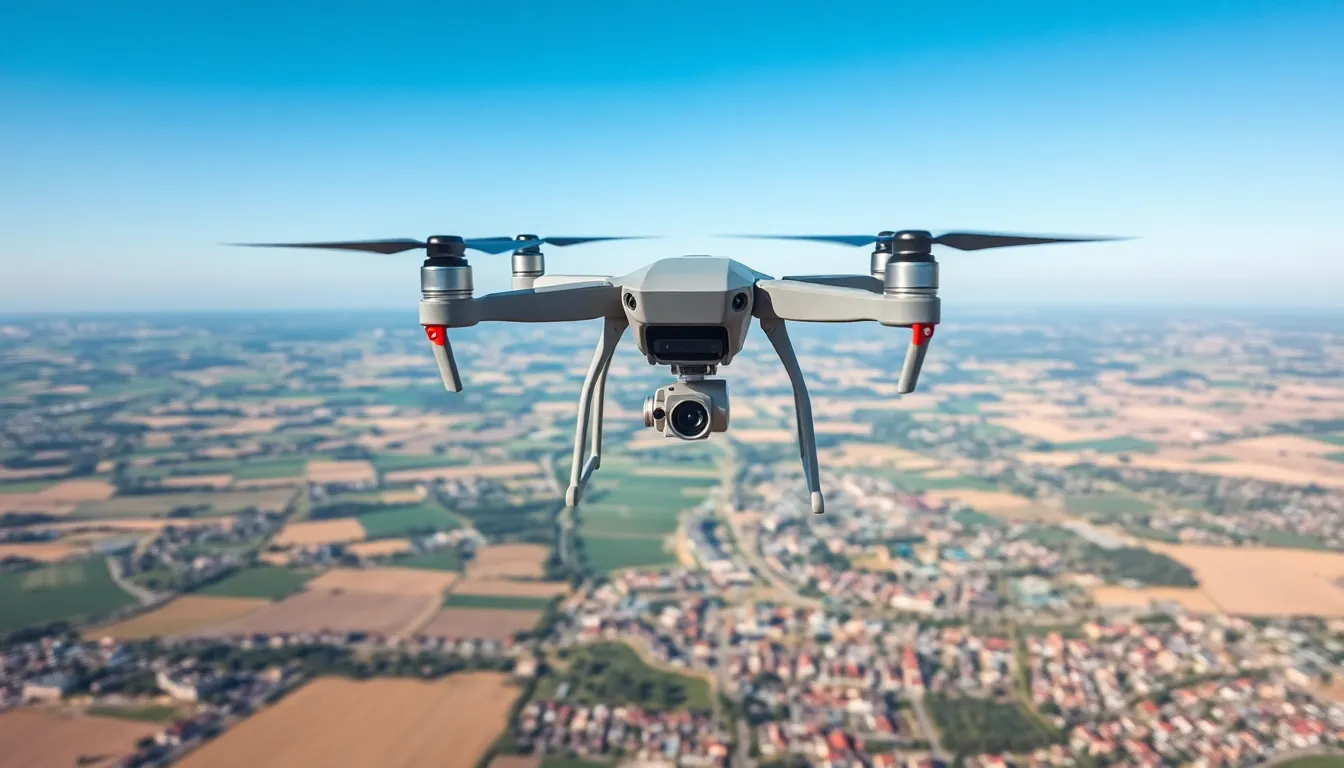In an era where technology evolves at lightning speed, drone software customization is becoming essential for maximizing the potential of unmanned aerial vehicles. Businesses and hobbyists alike are discovering that off-the-shelf solutions often fall short of their unique needs. Customizing drone software not only enhances performance but also opens doors to innovative applications across various industries.
From agriculture to real estate, tailored software solutions can transform how drones operate, collect data, and deliver results. By leveraging customized features, users can improve efficiency, increase productivity, and gain a competitive edge. As the demand for specialized drone capabilities grows, understanding the importance of software customization becomes crucial for anyone looking to harness the full power of this technology.
Table of Contents
ToggleUnderstanding Drone Software Customization
Drone software customization is vital for optimizing performance and achieving specific goals. Tailored solutions allow users to maximize the capabilities of unmanned aerial vehicles across diverse applications.
Importance of Customization
Customization enhances a drone’s functionality to meet unique user requirements. Businesses and enthusiasts benefit from specialized features, resulting in improved efficiency and effectiveness. For example, in agriculture, customized software can analyze crop data, leading to better yield predictions. In real estate, tailored mapping applications provide detailed aerial photography that aids in property marketing. As industries evolve, the necessity for customized solutions becomes paramount.
Key Components of Drone Software
Several key components contribute to effective drone software customization:
- User Interface: A user-friendly interface streamlines control and data management.
- Flight Control Systems: Tailored algorithms enhance navigation and stability under various conditions.
- Data Processing Tools: Custom data analysis capabilities improve the quality and relevance of collected information.
- Integration Options: Compatibility with other software systems enables a seamless workflow.
- Telemetry Features: Real-time monitoring and reporting functions ensure informed decision-making.
Understanding these components allows users to select the right features for their specific needs, thereby optimizing drone performance.
Types of Drone Software

Drone software comes in various forms, each tailored to specific applications and functions. Understanding these types is essential for maximizing the potential of drones.
Flight Control Software
Flight control software regulates a drone’s navigation, stability, and overall flight performance. It processes inputs from sensors and executes commands to maintain desired flight paths. Key features include:
- Autopilot systems: Automate flight plans, ensuring consistent and precise movements.
- Real-time telemetry: Offer live data on altitude, speed, and battery status, allowing users to monitor critical parameters during flight.
- Obstacle avoidance: Utilize sensor data to detect and evade obstacles, enhancing safety and operational reliability.
Examples of flight control software include PX4 and ArduPilot, known for their flexibility and strong community support.
Data Processing Software
Data processing software handles the analysis and visualization of data collected during flight. It transforms raw data into actionable insights. Important components include:
- Image processing algorithms: Enhance aerial images and generate 3D models from photographs or video.
- Geospatial analysis tools: Assist in mapping and measuring land, crucial for applications in agriculture and urban planning.
- Data integration capabilities: Enable seamless connections with existing systems, allowing users to incorporate drone data into broader workflows.
Notable data processing software solutions include DroneDeploy and Pix4D, both designed to streamline data interpretation for various industries.
Benefits of Customizing Drone Software
Customizing drone software presents significant advantages for users in various industries. Tailored solutions enhance functionality and meet specific operational demands.
Enhanced Performance
Enhanced performance becomes evident through optimized algorithms and features designed for specific missions. Customized flight control software improves navigation accuracy, stability, and responsiveness to environmental conditions. For example, drones equipped with specialized payload management systems can carry and deploy agricultural sensors more reliably, resulting in better data collection. Additionally, custom telemetry features provide real-time feedback tailored to operational objectives, facilitating proactive adjustments during flight.
Increased Efficiency
Increased efficiency manifests through streamlined workflows and tailored data processing capabilities. Customized drone software can automate data collection, significantly reducing the time required for missions. For instance, in agriculture, drones can automate crop monitoring and yield assessment, translating to fewer man-hours on site. Enhanced integration options allow seamless data transfer to analytical platforms, enabling faster insights and decision-making. Custom interfaces can simplify user interactions with complex data sets, reducing training time and improving overall productivity.
Challenges in Drone Software Customization
Customization of drone software presents several challenges that users must address. Two prominent areas of concern include technical limitations and regulatory compliance.
Technical Limitations
Technical limitations often hinder effective drone software customization. Hardware constraints, such as processing power and memory, restrict the complexity of the software features. Compatibility issues may arise when integrating third-party tools or additional hardware components, resulting in performance degradation. Additionally, the varying capabilities of drone models can influence the extent of customization. For example, a low-cost drone might lack the necessary sensors to support advanced data processing software, limiting its operational scope.
Programming complexities can further complicate development. Developers may encounter difficulties in coding for specific functionalities, such as real-time data processing or advanced flight algorithms. Insufficient access to development tools and resources can prolong the customization process, leading to delays in deployment.
Regulatory Compliance
Navigating regulatory compliance poses another significant challenge in drone software customization. Governments impose strict regulations regarding drone operations, particularly concerning safety and data privacy. Users must ensure that customized software meets local aviation authority requirements, which can vary significantly between jurisdictions.
Custom features that collect or process data also face scrutiny under privacy laws. Failure to comply with legislation, such as the General Data Protection Regulation (GDPR) in Europe or the Federal Aviation Administration (FAA) regulations in the United States, can lead to hefty fines and operational restrictions. As a result, developers must integrate compliance protocols during the customization process to mitigate legal risks.
Drone software customization is essential for maximizing the potential of unmanned aerial vehicles. As industries continue to evolve users must embrace tailored solutions to meet their unique needs. Custom software not only enhances performance but also streamlines workflows and boosts productivity.
By understanding the key components and types of drone software available users can make informed decisions that align with their specific operational goals. While challenges exist in the realm of technical limitations and regulatory compliance navigating these hurdles is crucial for successful implementation.
Ultimately the future of drone technology lies in its ability to adapt and innovate. Customized software solutions will play a pivotal role in shaping the next generation of drone applications across various sectors.


